













The magazine of the art-form of the photo-essay
“A free, really high quality photo-essay magazine. Fabulous!”
Stephen Fry. British actor, writer and film & documentary maker

May 2015 back issue



by Daniel González Acuña
I grew up near the Plaza de Toros de la Maestranza, Seville's bullring, in the heart of the quarter called El Arenal.
Despite of this, I am not a very enthusiastic supporter of bullfighting. I remember when I was a child going to the
bullring, at the end of the "corrida", and seeing how dead bulls were cut to pieces before being sold for meat (now this
is forbidden due to a disease known as bluetongue).
This reportage was shot during the Feria de Abril (Seville's Fair) of 2014, one of the most important bullfighting events
in Spain. That afternoon, bullfighters Manuel Diaz "El Cordobes", Juan JosÈ Padilla and David Fandila "El Fandi" took
part in the bullfight at the Maestranza. It was a top cast of bullfighters and this fact was evident in the atmosphere.
Bullfighting is a visceral event. Blood, death, boldness, suffering, pain, fear converge in an complex spectacle with
equally visceral supporters and detractors.
There are many ways to read bullfighting: like an art, a cruelty, a tradition. As a trained historian, I read into bullfighting
like the remains of a primitive context, a moment when natural forces were preeminent over human beings. In these
circumstances, ceremonies to conjure up fear into the unknown, to natural arbitrariety, were designed. Ceremonies
where human beings faced fierce nature, identified with the bull.
There is no better image of the devil than the bull, with their dangerous horns, its huge size, its awesome power. Bulls
become victims of expiation, so the public projects its hope over the bullfighter as a representative of the Humankind.
There is something irrational in this spectacle. The victory of bullfighter represents the victory of human beings over the
chaotic world. The supremacy of man over the beast.
Now, bullfighting has a less religious or metaphysical dimension and has more festive and economic implications. But
its form derives directly from a historical way of man-to-man battle, including cutting pieces of body of the defeated (ear,
tail and head).
On this occasion, Juan José Padilla was the only matador to win an ear. The public recognized his achievement, the
supremacy over darkness was restored.
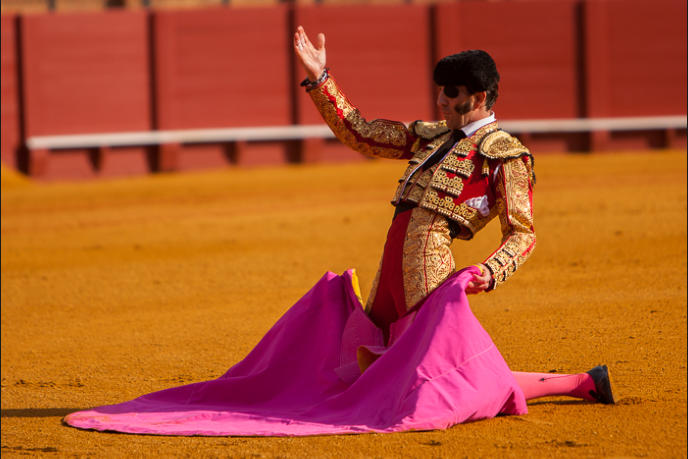
Juan José Padilla receives the bull at the beginning of the bullfight.
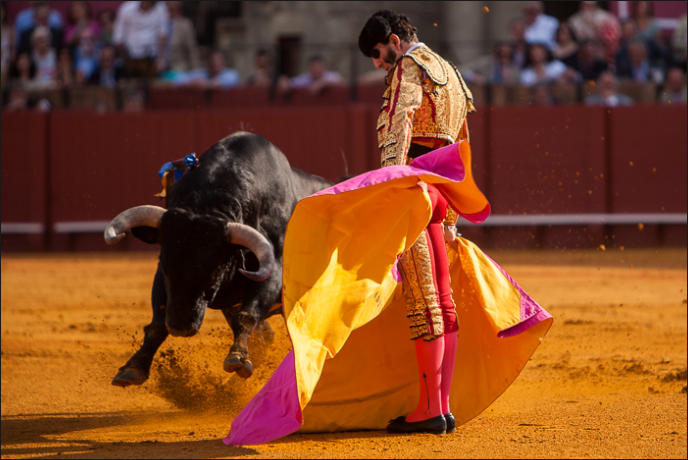
Juan José Padilla fights bull during the bullfight.
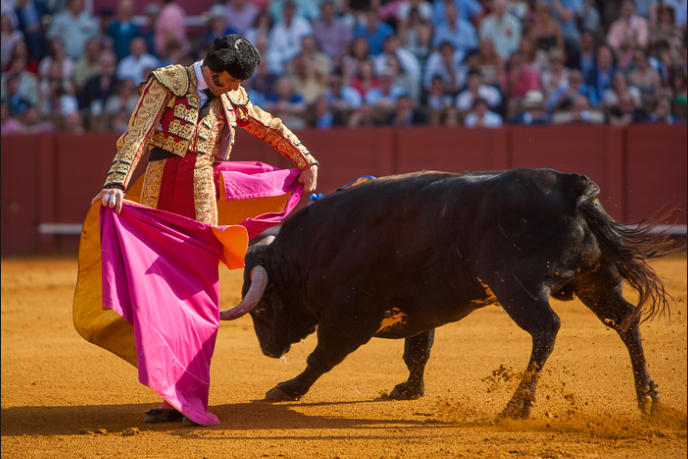
Juan José Padilla performs a capote pass.
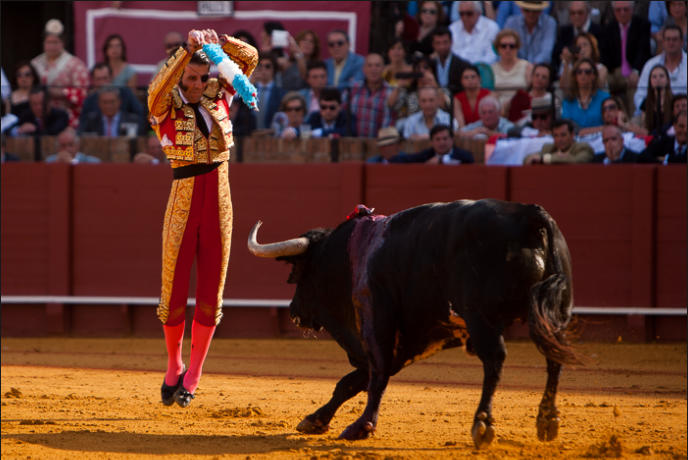
Juan José Padilla puts barbed darts (called “banderillas”) during the bullfight.
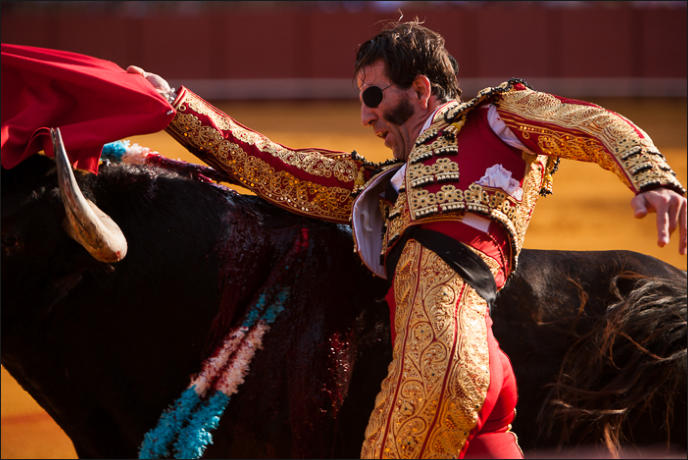
Juan José Padilla gives a “pase de pecho” during the bullfight.
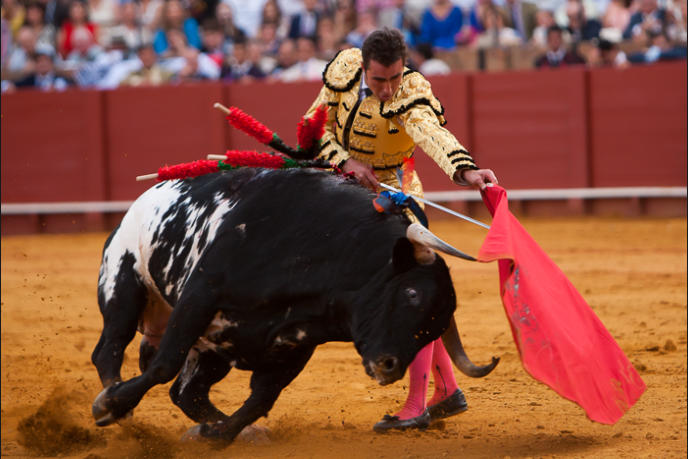
David Fandila "El Fandi" in action during the bullfight.
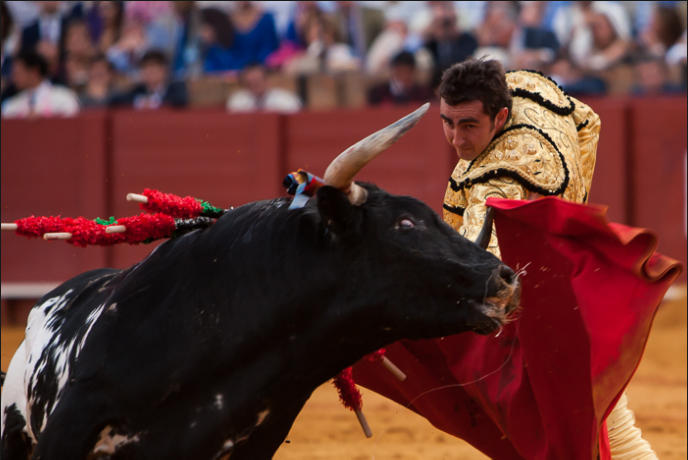
David Fandila "El Fandi" performs a capote pass.
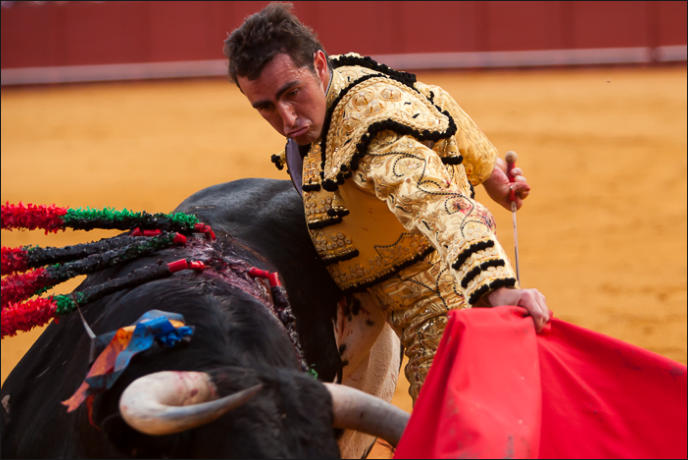
David Fandila "El Fandi" gives a “pase de pecho”.
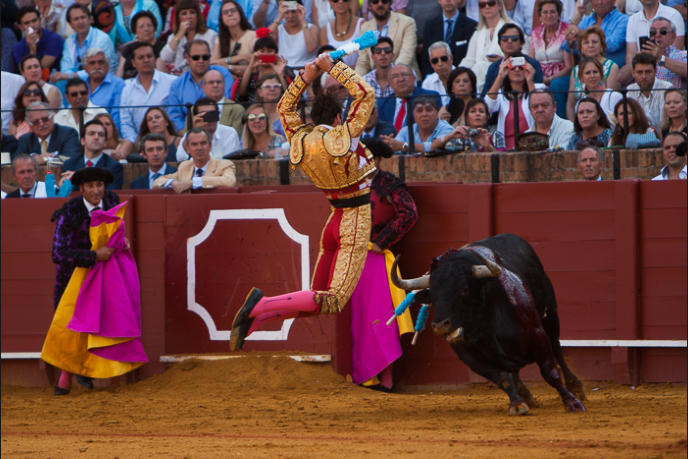
Juan José Padilla performs the "tercio de banderillas.
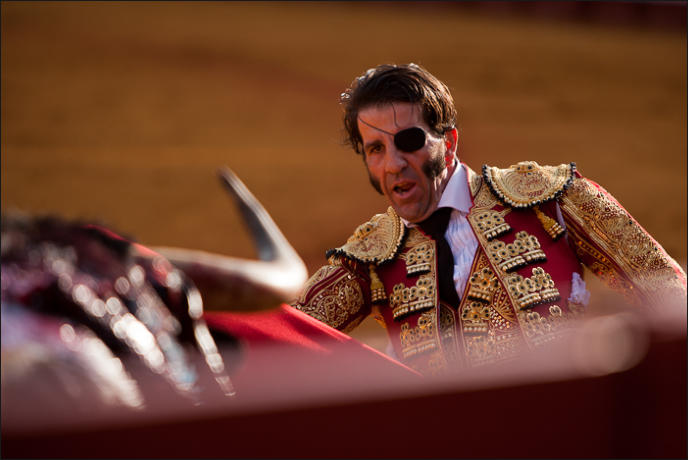
Juan José Padilla calls the bull during the bullfight.
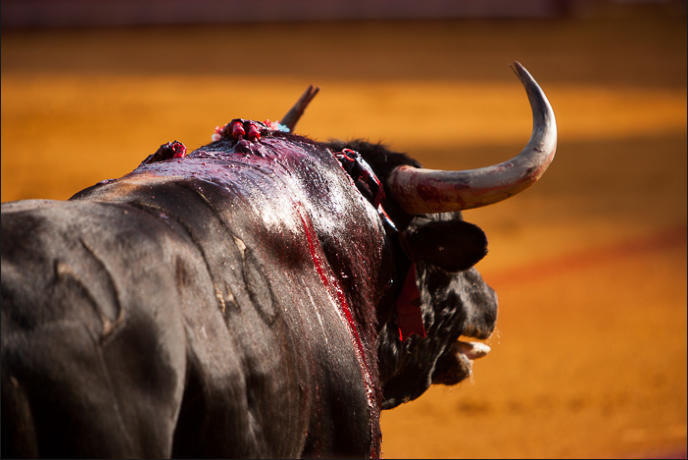
A bull injured during a bullfight, with its splintered horns.
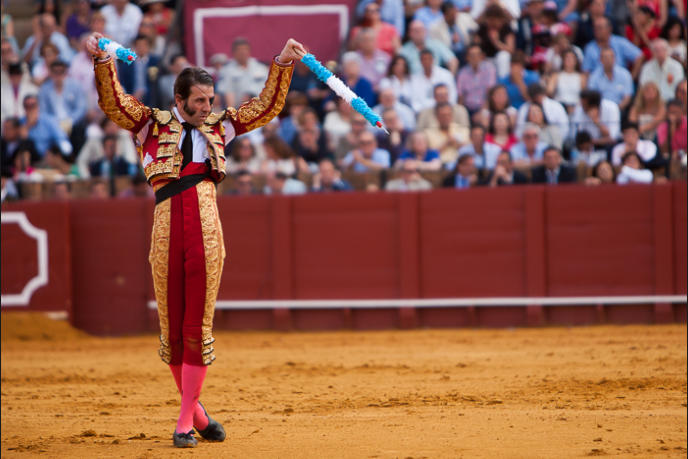
Juan José Padilla performs the "tercio de banderillas".
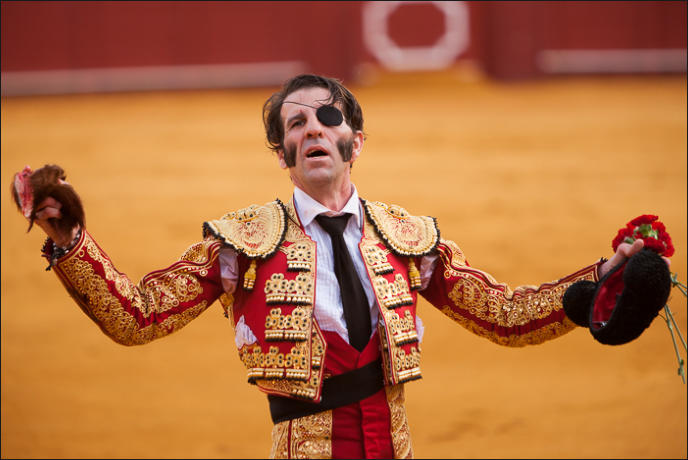
Juan José Padilla celebrates that he cut off an ear to his second bull.
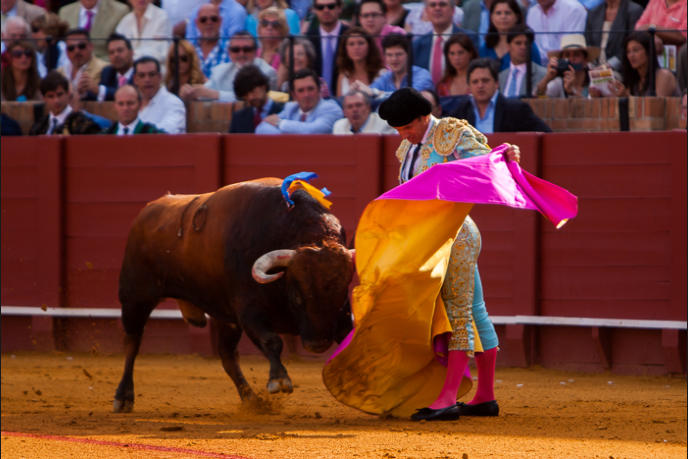
Manuel Diaz "El Cordobes" performs a capote pass.
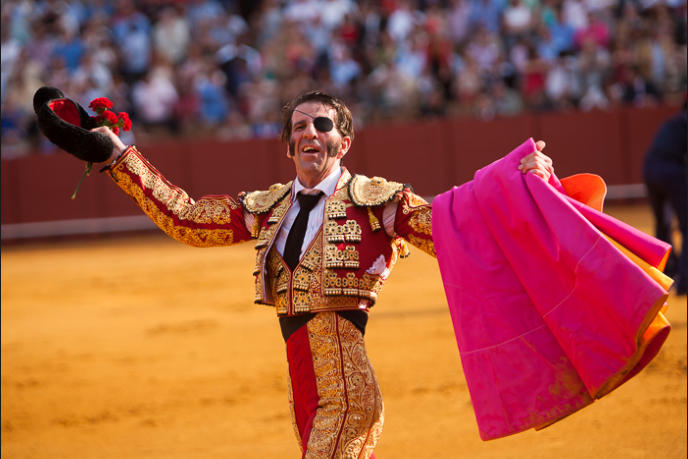
Juan José Padilla celebrates a "vuelta al ruedo" after killing his first bull.

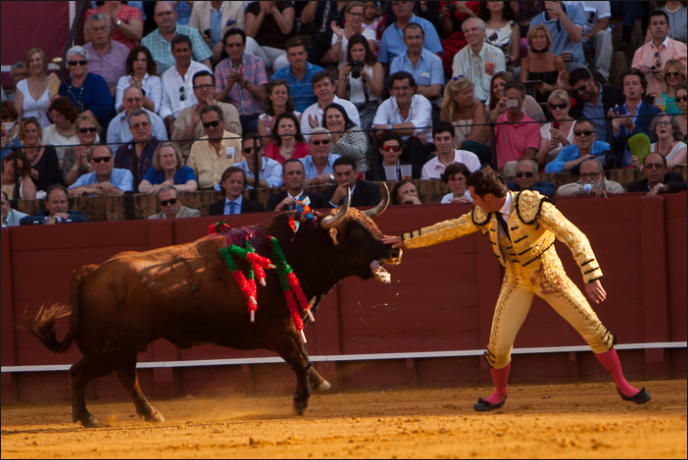
David Fandila "El Fandi" performs the "tercio de banderillas".
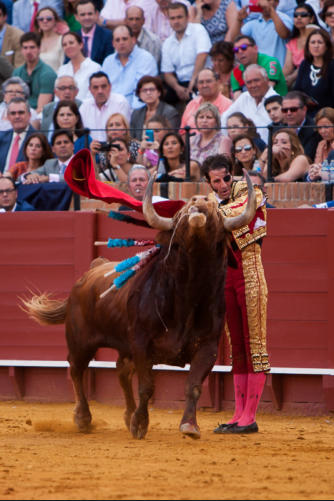
Juan José Padilla performs the "tercio de muerte".
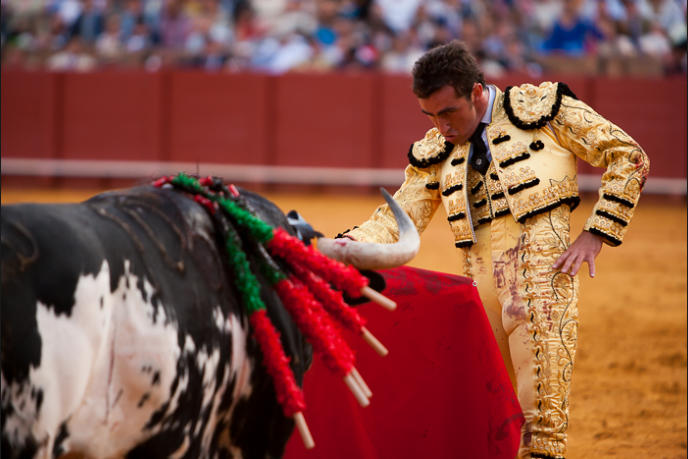
David Fandila "El Fandi" calls the bull during the bullfight.











